NFSI's 2023 Wrapped
2023 was a busy and challenging year for the NFSI. We deployed 56 broadband ocean-bottom seismometers (BOBS) across 3 projects, spent 27 days at sea, and hosted 39 marine seismology researchers for a 5-day workshop. We received 2 batches of new BOBS, bringing our total instruments received to 102 (of 121 planned for the full facility). Here are some of the highlights of our year.
February to May - Test Deployment in Tyrrhenian Sea
Güralp deployed 4 of NFSI's Aquarius BOBS near the island of Ischia (offshore Naples, Italy) to test modifications made to the instrument design following recovery of the Laurentian Fan array in August 2022. These modifications included fixing a firmware bug, separating electrical connections to the pressure case for the hydrophone and burnwire, changing the lifting frame attachment points, removing a plastic baffle from the acoustic modem, and replacing threaded inserts in the buoyancy which were found to be the wrong grade of stainless steel due to a 3rd party supplier error. Overall, the deployment went smoothly, and the modifications performed well over a 101-day deployment. The 4 instruments were deployed within a few hundred metres of each other to record comparable signals.
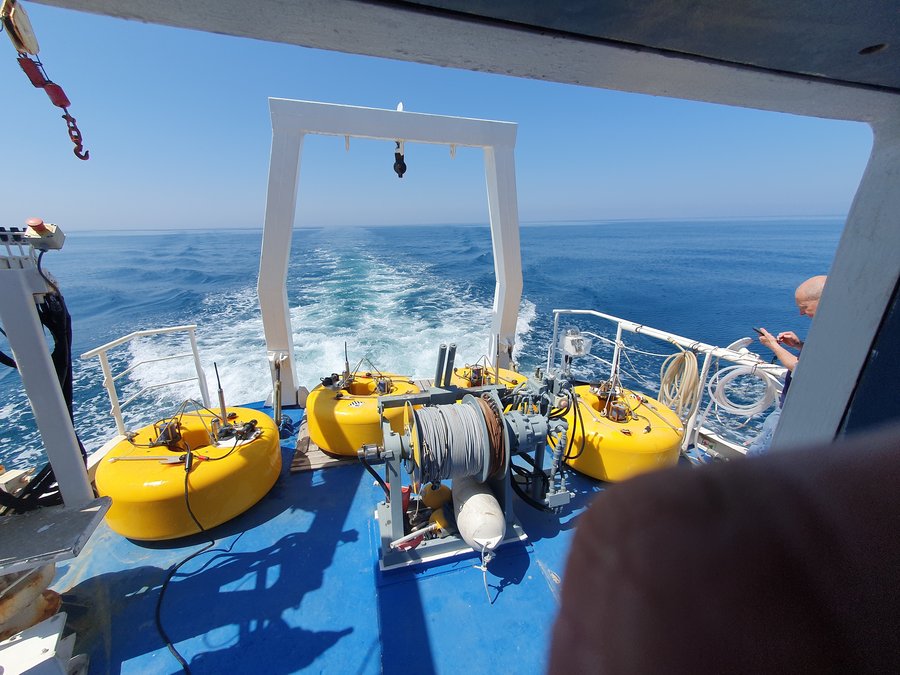
Recovered Aquarius BOBS on the back deck of a small vessel. Photo provided by Phil Hill.
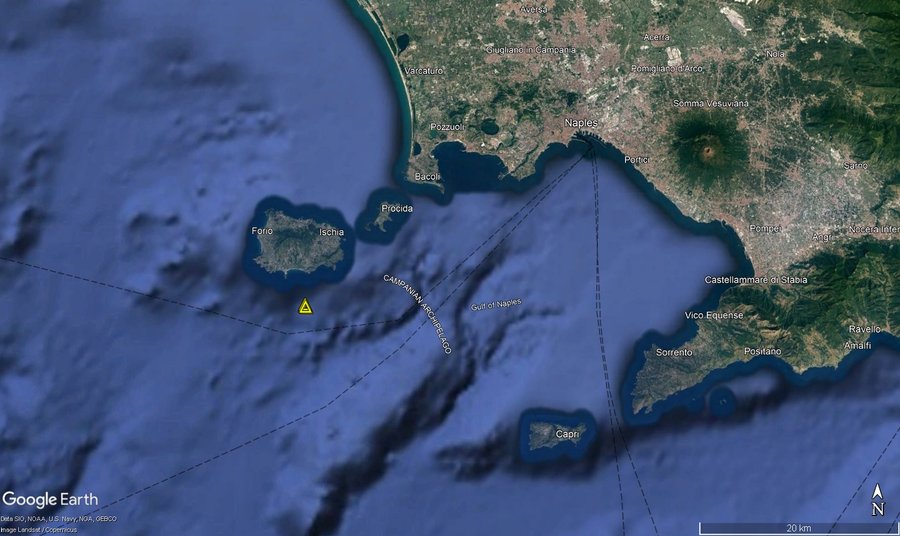
Location of BOBS (yellow triangles) deployed near Ischia, Italy.
In the Laurentian Fan data, the broadband hydrophones used on our OBS were saturated for most of the 9-month deployment. Follow-up discussion with the manufacturer suggested the gain might have been set too high. The gain setting is hard-wired into this particular hydrophone model, so cannot be changed once the sensors are produced. To determine an appropriate gain for our application, 3 settings were tested during the Ischia deployment. As expected, the different gains produced scaled versions of the same data, however the high gain instrument saturated on a signal peak a few weeks after recording started and did not recover, even though measurements from the other instruments show it should have come back on scale. Discussion with High Tech Inc is still ongoing regarding these results.
Preliminary analysis of the hydrophone data for compliance showed good results, comparable to that obtained from other long-period pressure gauges in use on other OBS instruments.
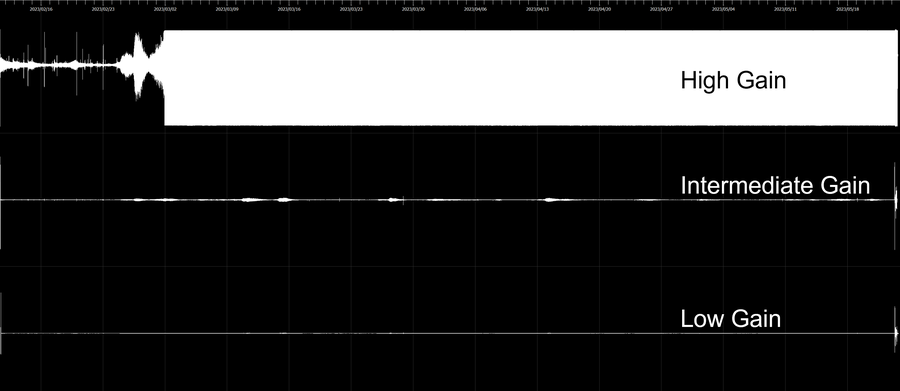
Hydrophone data recorded with 3 different gain settings, unscaled.
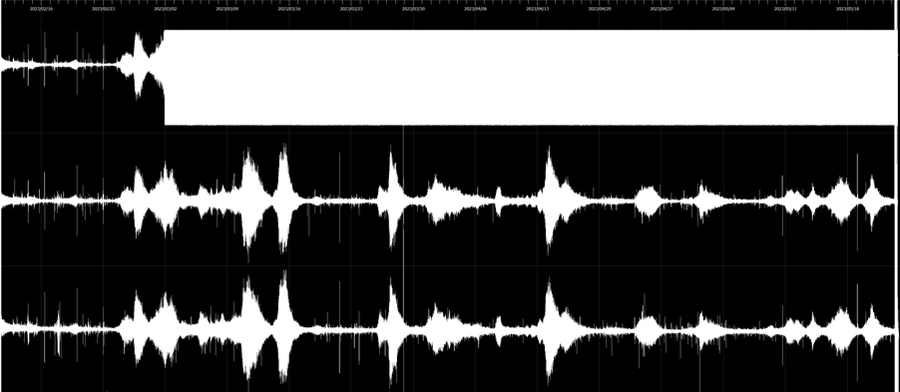
Hydrophone data recorded with 3 different gain settings, scaled to match amplitudes.
May - Marine Seismology Workshop
The 2nd Marine Seismology Workshop hosted by the NFSI took place May 22-26 in Halifax. A total of 39 participants from institutions across Canada and around the world attended for a week of learning and community building. Focused primarily on training HQP (students and post-docs), the workshop included lectures on various topics in marine seismology, hands-on data analysis tutorials, a field demonstration of deployment and recovery of the Aquarius BOBS from a local fishing vessel, and a proposal writing competition. Attendees included graduate students, post-doctoral fellows, faculty, technical staff and government researchers.
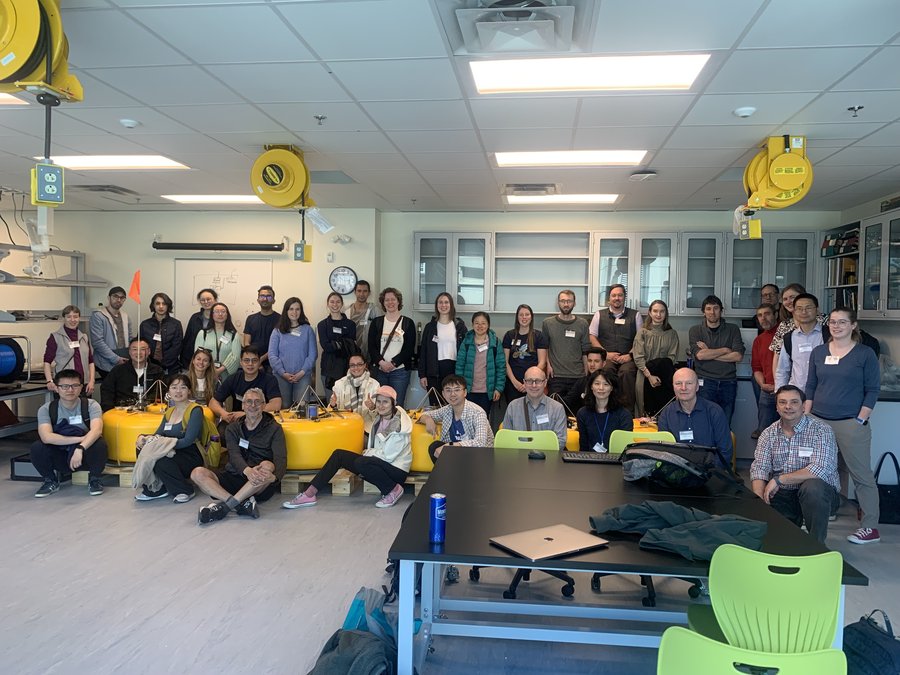
2023 Marine Seismology Workshop participants in the NFSI lab space. Photo provided by Mladen Nedimović.
Feedback from participants was extremely positive, and we received suggestions which should allow us to make future events even better! We expect the next workshop to take place in Spring 2025, and look forward to welcoming the marine seismology community to join us again and continue many of the discussions started this year.
Thank you to everyone who attended and made this such a memorable event. Special thanks to the workshop sponsors, NSERC-CREATE iMAGE and NOR-R-AM, and our guest speakers J. Pablo Canales and Helen Janiszewski.
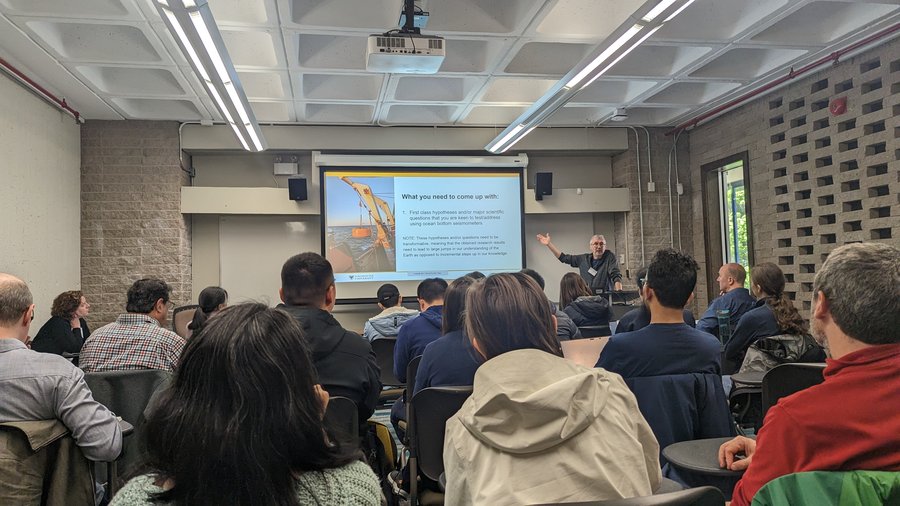
Dr. Mladen Nedimović introducing the proposal writing competition. Photo provided by Pinar Gürün.
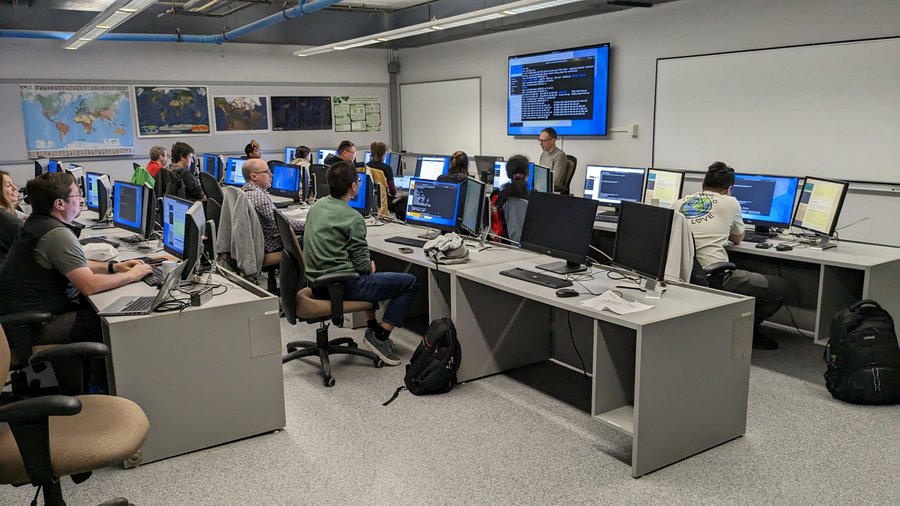
Dr. Pascal Audet leading a tutorial in OBS data processing. Photo provided by John Thibodeau.
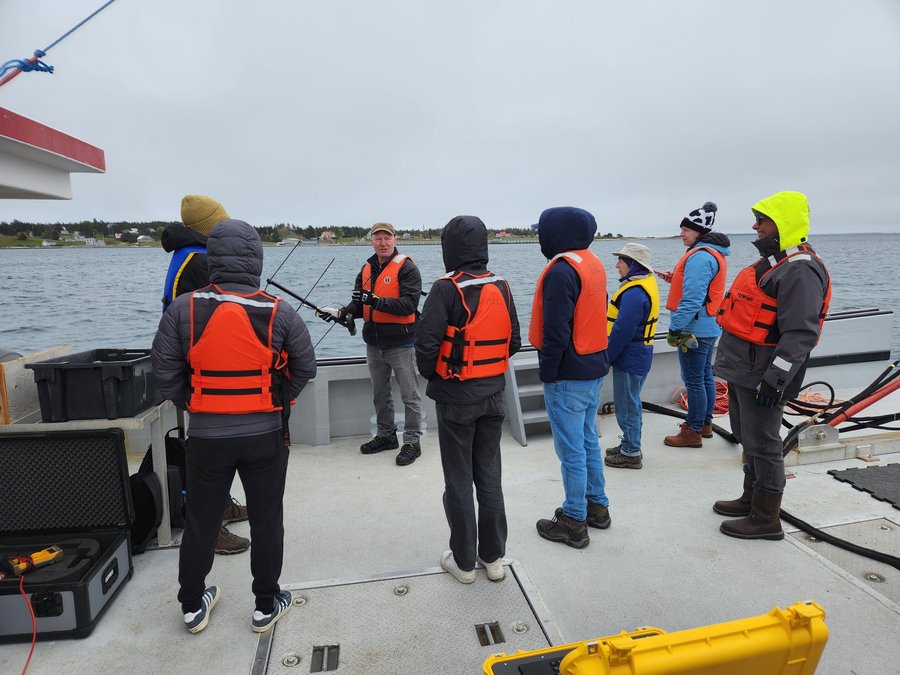
Dr. Graeme Cairns demonstrating the VHF direction finder during a field trip. Photo provided by Katie Bosman.
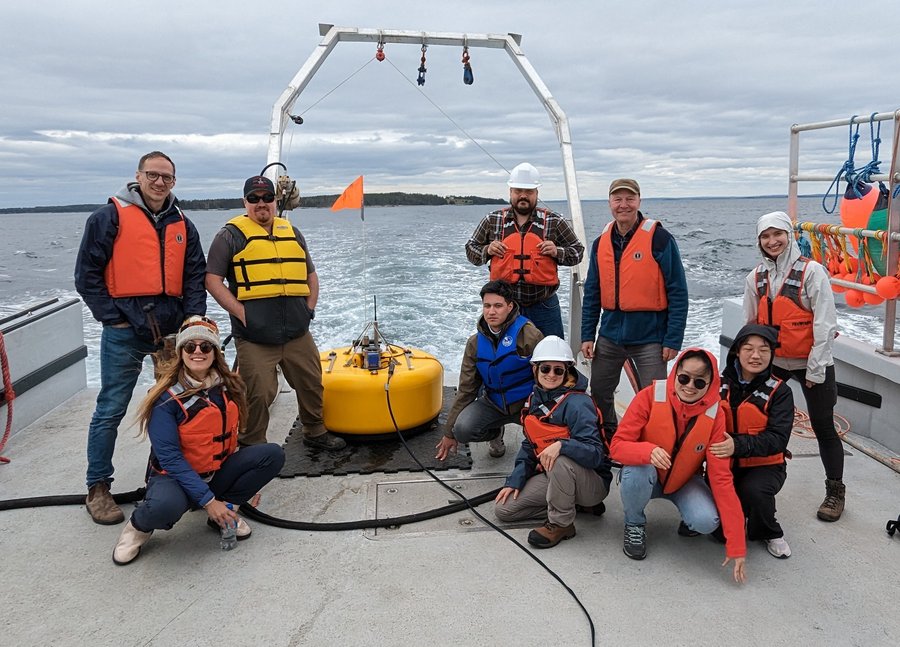
One of the groups for the field demonstration. Photo provided by John Thibodeau.
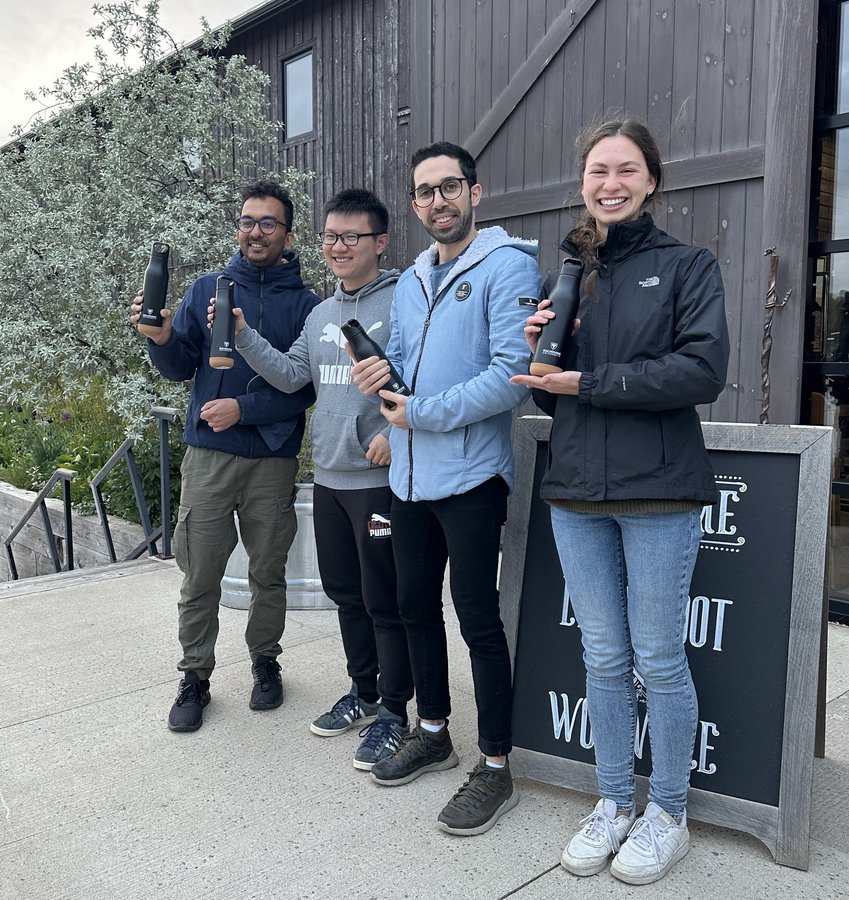
The winning group for the proposal writing competition. Photo provided by Kim Welford.
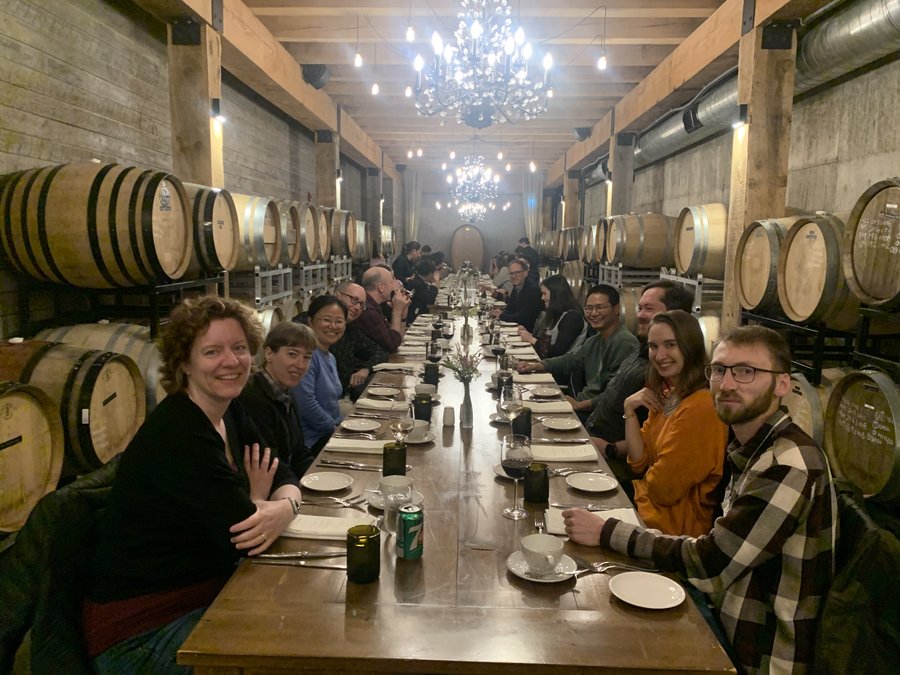
Several NFSI PIs at the closing reception. Photo provided by Mladen Nedimović.
September - Lower St Lawrence Seaway OBS Deployment
NFSI staff deployed 9 Aquarius BOBS in the St Lawrence River estuary September 26-29, although 1 instrument experienced a minor technical malfunction during deployment and had to be recovered immediately. The remaining 8 instruments (blue triangles in the map below) will be used to characterize seismicity in the failed rift structure underlying the river. Recovery of the BOBS is planned for Spring 2024.
A concurrent deployment of 48 nodal land stations along the north and south shore of the river was performed by researchers from Dalhousie University, McGill University, and GSC-Atlantic. Station locations are shown by green triangles in the map. The sensors were installed from mid-September to mid-October 2023.
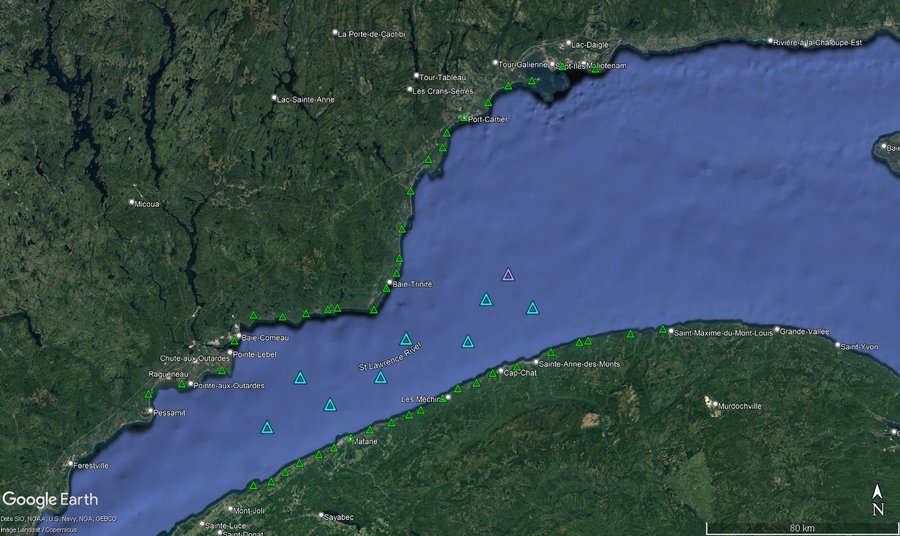
Instrument locations for the Lower St Lawrence Seaway project. The blue triangles are BOBS; the purple triangle is a BOBS which had to be recovered immediately after deployment due to a technical malfunction. The green triangles are land nodal stations deployed mid-September to mid-October 2023.
Our original plan for this project was wrecked by Hurricane Lee, which swept through Atlantic Canada on September 16-17, the weekend we had scheduled to start the operation. We had planned to mobilize 14 Aquarius BOBS from Halifax aboard the local Nova Scotia vessel that we would use for the survey, but had to find a different vessel in a very short time and update our logistics accordingly. Fortunately, a collaborator at Université du Québec à Rimouski (UQAR) connected us with the owner of a small fishing vessel based in Chaleur Bay who agreed to meet us to start operations from Matane, QC. Due to the short timeline, we were only able to transport 9 BOBS from Halifax to Gaspésie by road and thus had to scale back the array from the initial plan.
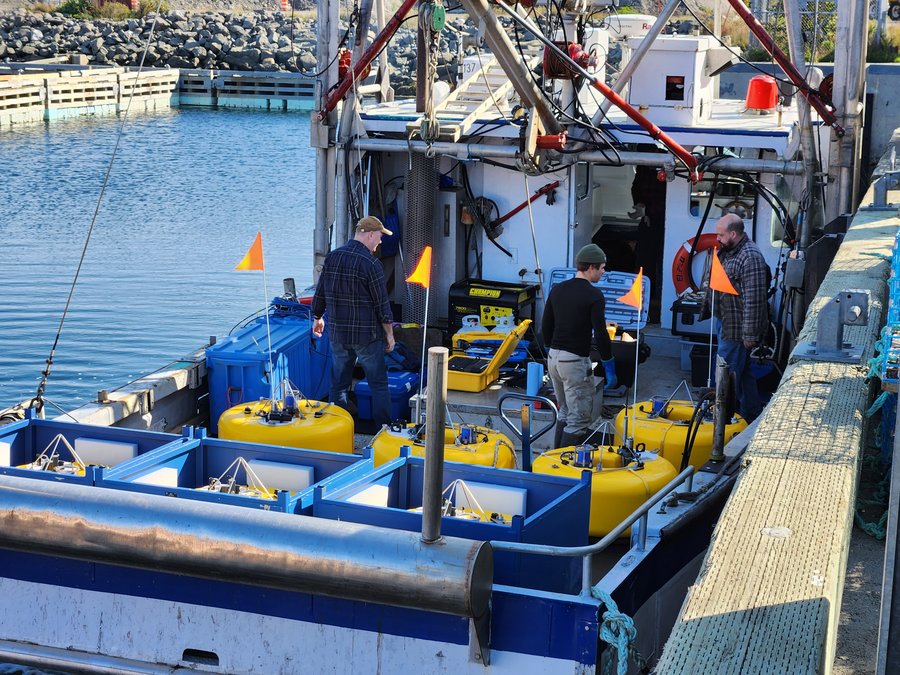
Preparing to leave the dock for a full day of deployments. Photo provided by Katie Bosman.
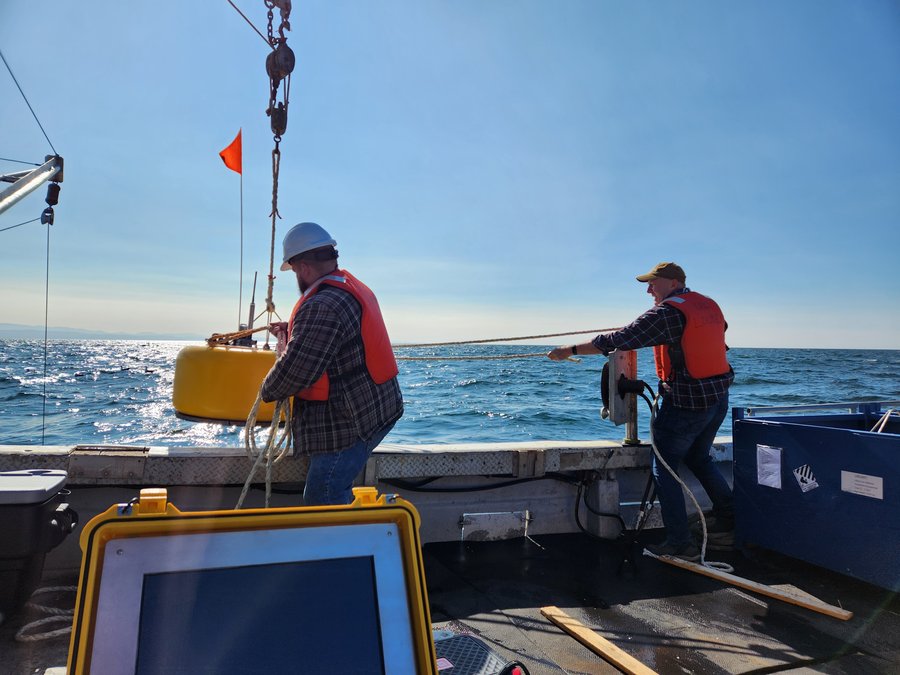
John Thibodeau and Graeme Cairns controlling taglines during an OBS deployment. Photo provided by Katie Bosman.
With the relatively small scale of this project and the proximity to land, we were able to deploy the BOBS instruments in a series of day trips, returning to shore each evening where we docked at a different harbour every night as we progressed through the array. Strong winds remaining in the aftermath of Hurricane Lee delayed the boat in its initial transit to meet us, so we had to start deployments at the east end of the array instead of the west (upriver) as planned. Battling upstream against the river's current slowed our transit speed between sites, so it took 3.5 days to deploy all of the instruments.
There were a few hiccups along the way, but overall the deployments went smoothly and we learned a great deal about how to prepare for and execute small-scale OBS operations. Louis and Romain of Kalynic were very friendly and helpful. We hope we can work with them again in future operations. We also had a videographer, Felix, join us for the trip, producing a short video about the deployment and the facility.
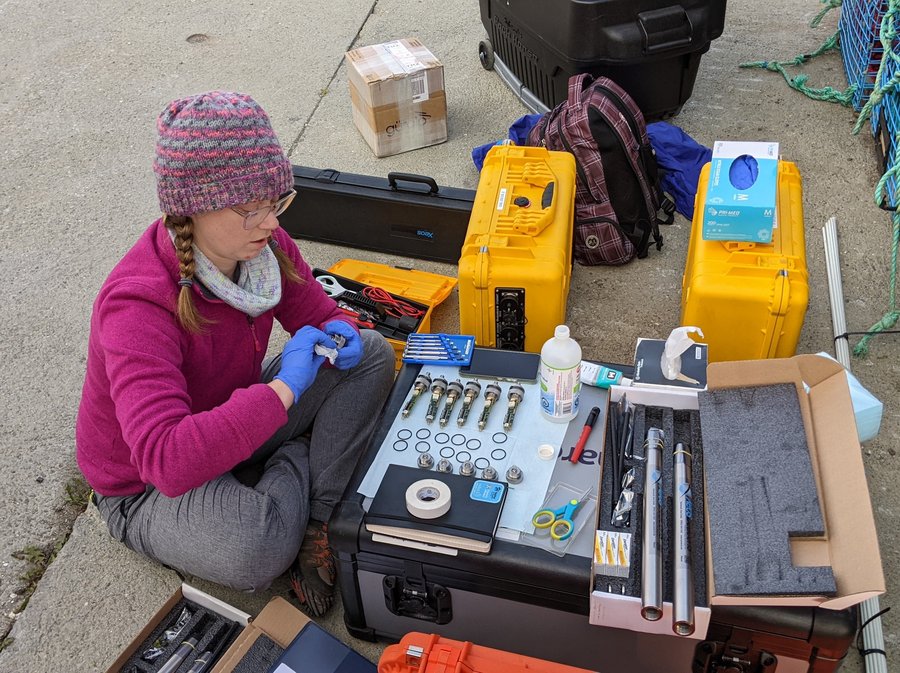
Katie Bosman preparing recovery beacons at the pier. Photo provided by Graeme Cairns.
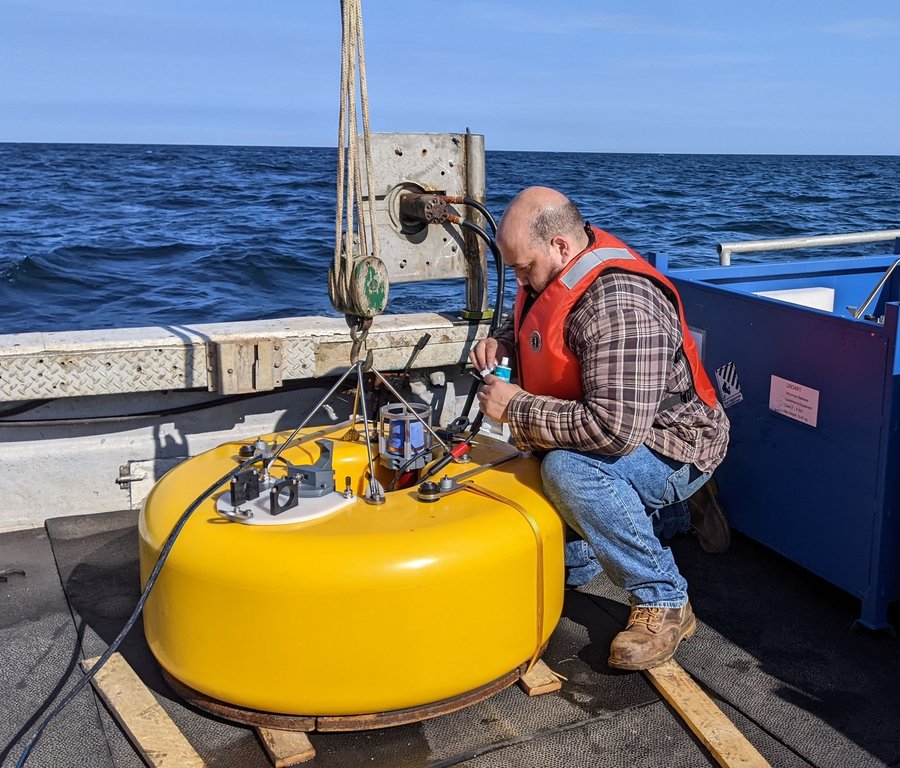
John Thibodeau checking electrical connections before deployment. Photo provided by Graeme Cairns.
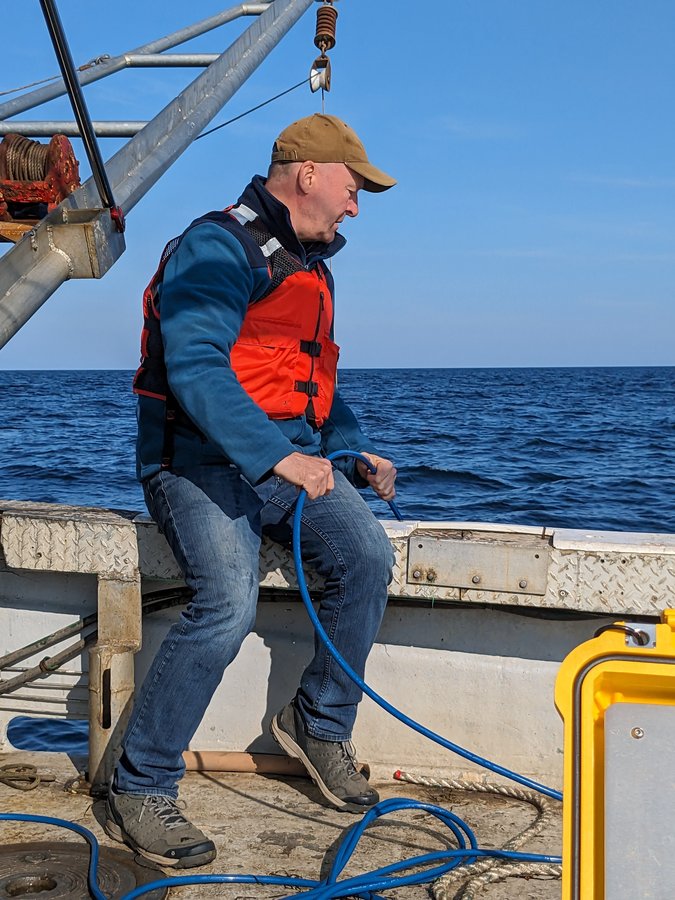
Graeme Cairns deploying the dunker for acoustic communication with a seafloor instrument. Photo provided by John Thibodeau.
October - PACSAFE OBS Deployment
We had just 10 days between arriving back in Halifax after the St Lawrence deployment and when we were scheduled to board CCGS John P Tully for an 18-day cruise offshore British Columbia. This cruise forms Leg 1 of the 5-year NSERC Alliance project PACSAFE (Pacific Coast Seismic Assessment for Faults and Earthquakes), a collaboration between researchers at the University of British Columbia, University of Victoria, Dalhousie University and the Geological Survey of Canada which will study earthquake hazards along Canada's west coast.
Personnel and equipment had to mobilize immediately following the St. Lawrence operation to Sidney, BC, to prepare the Aquarius instruments which had been sent to IOS in Summer 2022 for this project. We spent a very busy week checking test data, charging batteries, assembling recovery devices, checking connections to the OBS pressure cases, and sorting out various other logistics in advance of sailing. We boarded Tully on October 10, leaving port on the 11th.
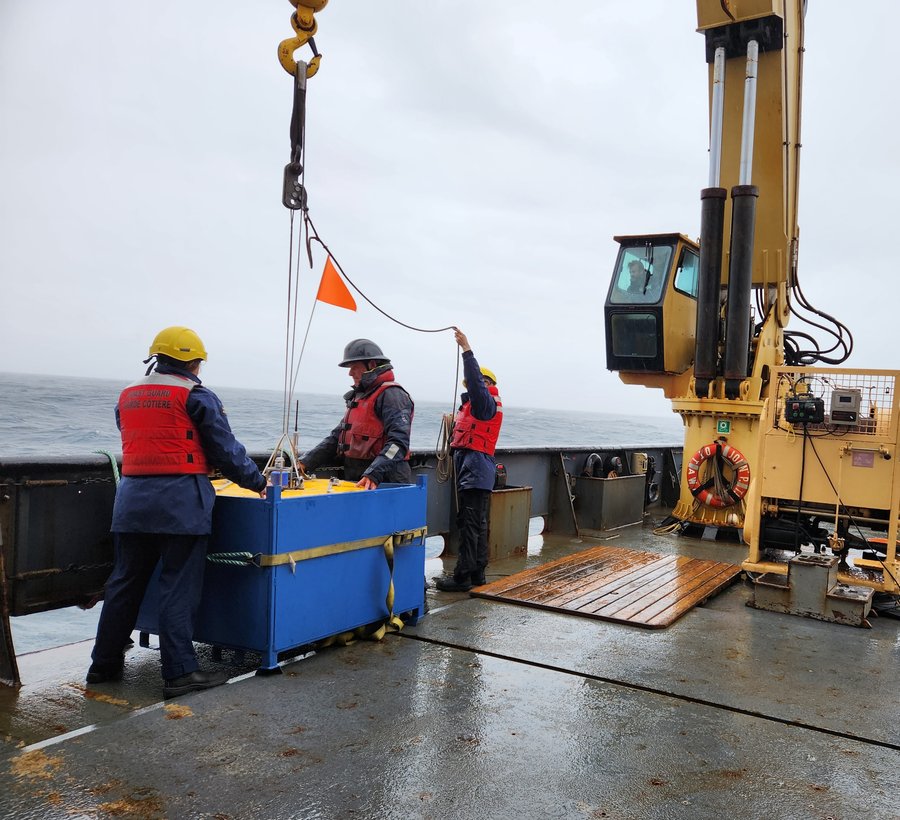
Deck crew of CCGS John P Tully deploying an Aquarius. Photo provided by Katie Bosman.
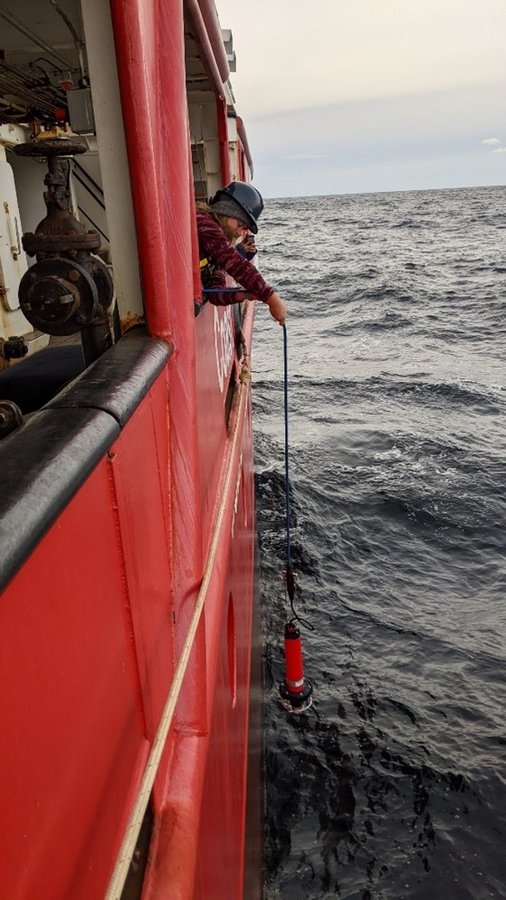
Deploying the dunker for acoustic communication with an instrument in the water. Photo provided by Graeme Cairns.
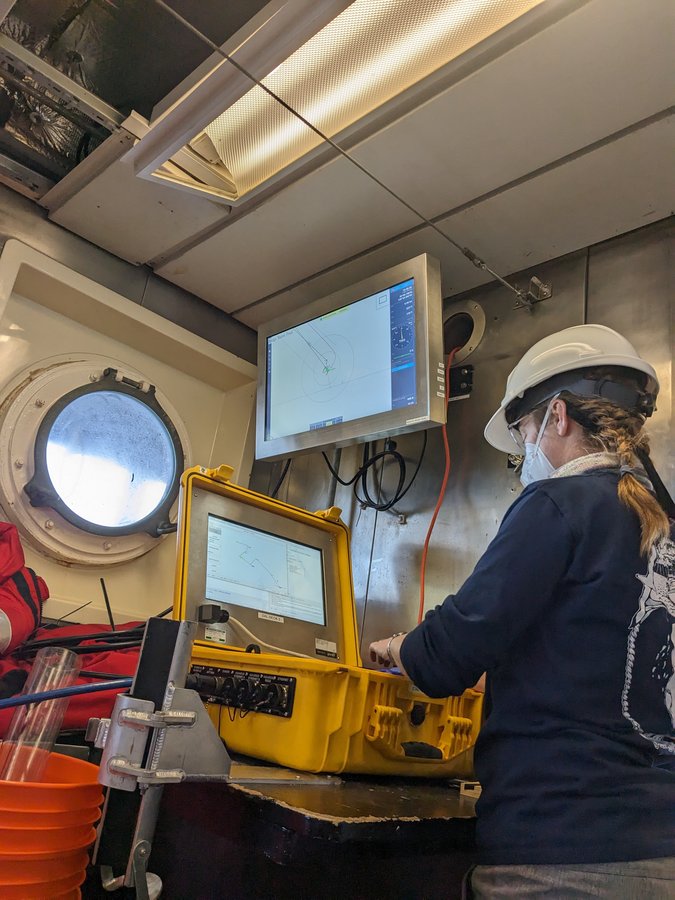
Acoustic communication through the deck unit to an underwater instrument. Photo provided by John Thibodeau.
The original plan for this cruise was to deploy 30 BOBS over the Queen Charlotte Fault west of Moresby Island (southern Haida Gwaii). However, major storm forecasts in the final days before sailing led to concerns about the exposure of this location and the time that would be lost transiting to shelter. Fortunately, the PACSAFE project includes several targets along the West Coast, so the plan was quickly changed to an alternative array near the north end of Vancouver Island, where shelter would be more readily accessible, before we left IOS. Chief Scientists Andrew Schaeffer and Cooper Stacey worked together to interleave OBS operations with sub-bottom profiling and sediment sampling to maximize use of the ship time we had available.
We still had to shelter for several days in the coastal fjords due to storms, and it initially looked doubtful that we would be able to deploy all of the instruments. A COVID outbreak onboard and a required crew change in the last few days of the cruise further threatened our operation. The ship's crew and science party took all of these situations in stride, however, and pulled together for a successful operation.
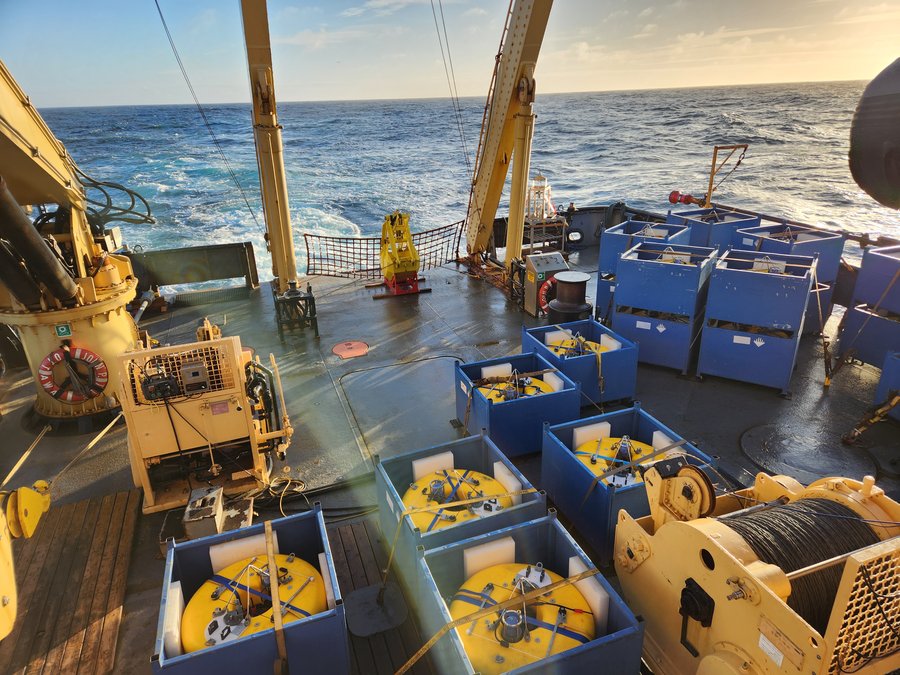
Aquarius BOBS in stillage boxes on aft deck of CCGS John P Tully. Photo provided by Katie Bosman.
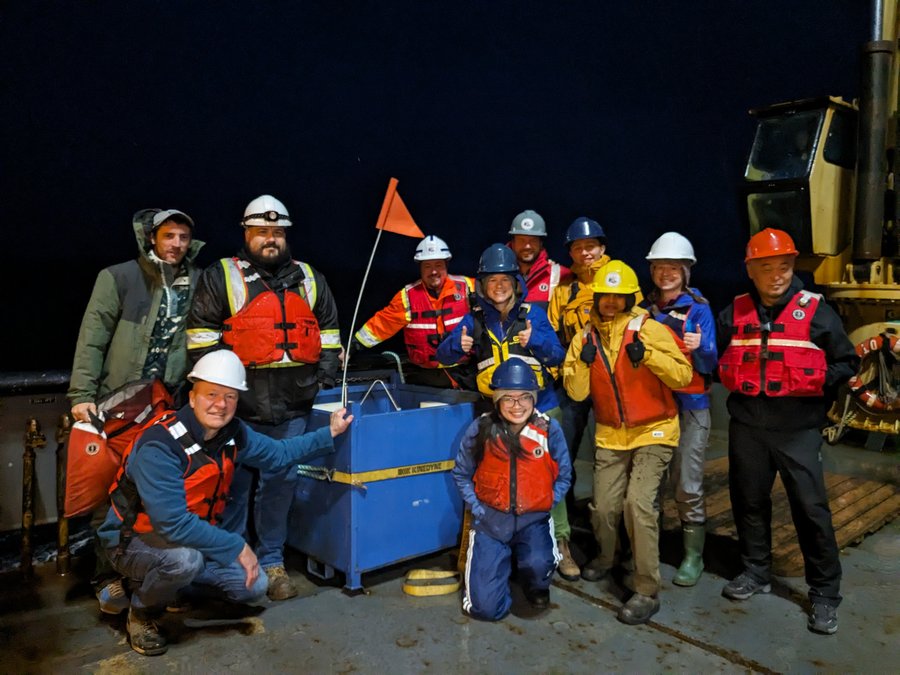
Most of the science party celebrating deployment of the last BOBS. Photo provided by Andrew Schaeffer.
In the end, we managed to deploy all 28 available BOBS across the Dellwood Knolls, Revere-Dellwood Fault and Cook Bank Slope (2 BOBS had been sidelined for technical reasons). Due to time constraints, we were not able to survey seafloor locations for about two-thirds of the instruments deployed on this cruise, which will be done when we go to recover them in Summer 2024 instead.
We also had the opportunity to meet several of the scientists working on PACSAFE and complementary geophysical research on the west coast. We look forward to seeing all of these lovely folks again on future cruises.
Social media posts from some of the scientists on board caught the attention of local broadcasters, so Andrew Schaeffer from GSC-Pacific and Graeme Cairns from NFSI were interviewed for regional news programming shortly after the cruise. Way to get the word out everyone!
A few Mw3+ earthquakes located in the deployment area were recorded by land stations shortly after we had deployed instruments at nearby locations during the cruise. We are very excited to see the data which will be retrieved from this array. We hope it will add significantly to understanding the structures of the Queen Charlotte triple junction.
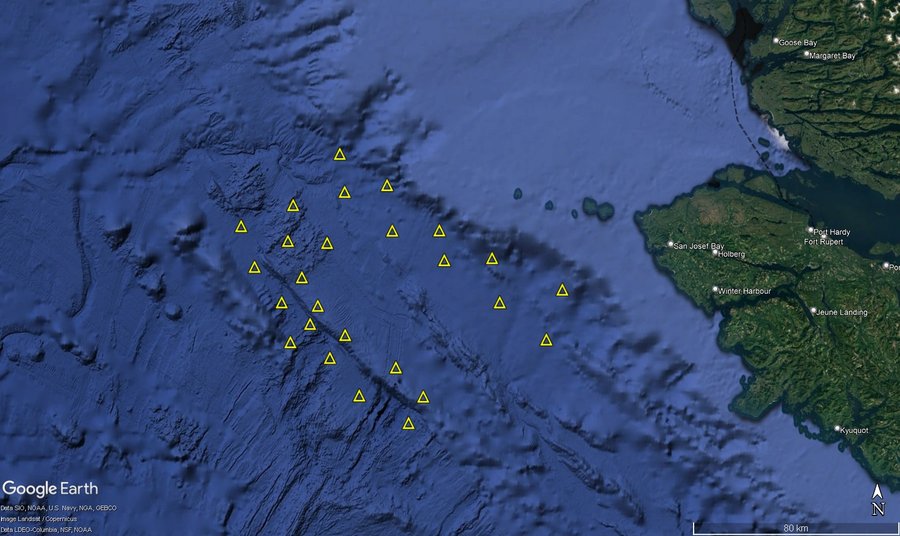
Locations of BOBS (yellow triangles) deployed for PACSAFE Leg 1, across the Dellwood Knolls, Revere-Dellwood Fault and Cook Bank Slope.
On November 15, just three weeks after being deployed, the instrument from station T227 surfaced unexpectedly. To our growing alarm, on November 21 a second instrument from station T229 also surfaced, raising the frightening possibility of a systemic problem that would cause more to come up, just as we were about to deploy another batch of BOBS in New Zealand. To our immense relief, this did not happen.
Weather patterns were generally pushing the instruments into Queen Charlotte Strait at the time, but with no guarantee they would continue to do so. Following our experience with drifters from the Laurentian Fan experiment, we knew that we had to act quickly to attempt a recovery. Our GPS beacons allow us to track a drifting instrument for about a year, but once in the open ocean the odds of it coming back within range of ports for a recovery operation to be cost-effective are very low.
Immediately after the first surfacing, our GSC collaborator Andrew Schaeffer was in touch with the Coast Guard and other local groups to see if they could help with recovery of the drifting instrument. Fortunately, the CCGS Tanu was nearby at the time and willing to help. A first attempt to recover T227 had to be called off when Tanu was only an hour away due to building seas. When conditions improved a few days later, T227 had temporarily lost satellite reception and was unable to transmit its position but Tanu was able to recover the T229 instrument instead. This OBS was returned to IOS on November 28, just one week after surfacing, and subsequently shipped back to Halifax for analysis.
We are coordinating with Güralp to perform forensics on the recovered instrument as soon as possible to learn what caused the early release. Both instruments which surfaced are from an early batch. There were some changes made to the design after these were produced which we suspect mitigate the risk of surfacing with later batches. We hope to have more information on this in the next few weeks.
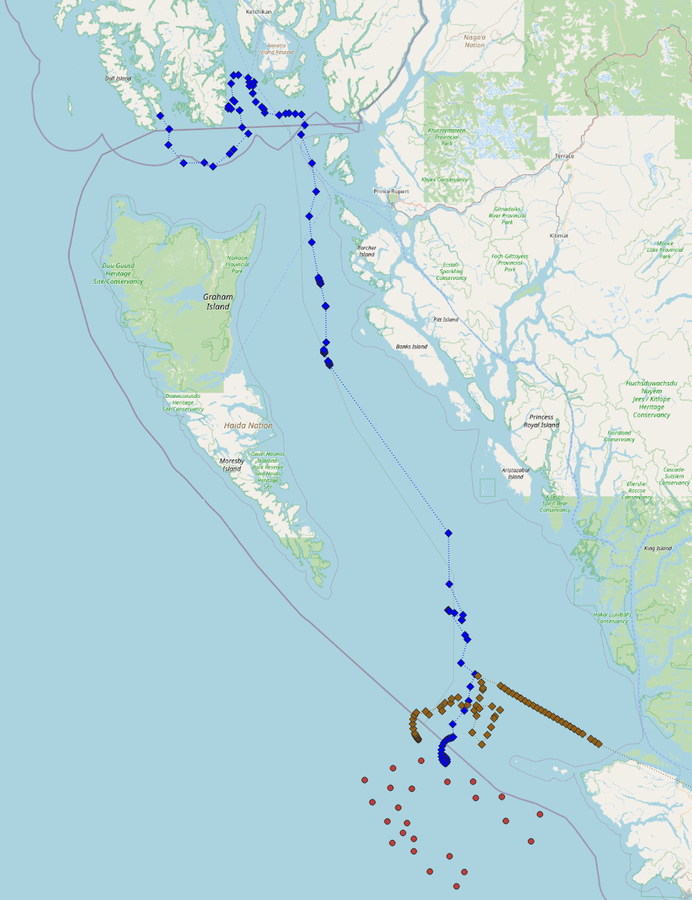
Positions of surfaced instruments T227 (blue) and T229 (brown) while drifting in November and December 2023.
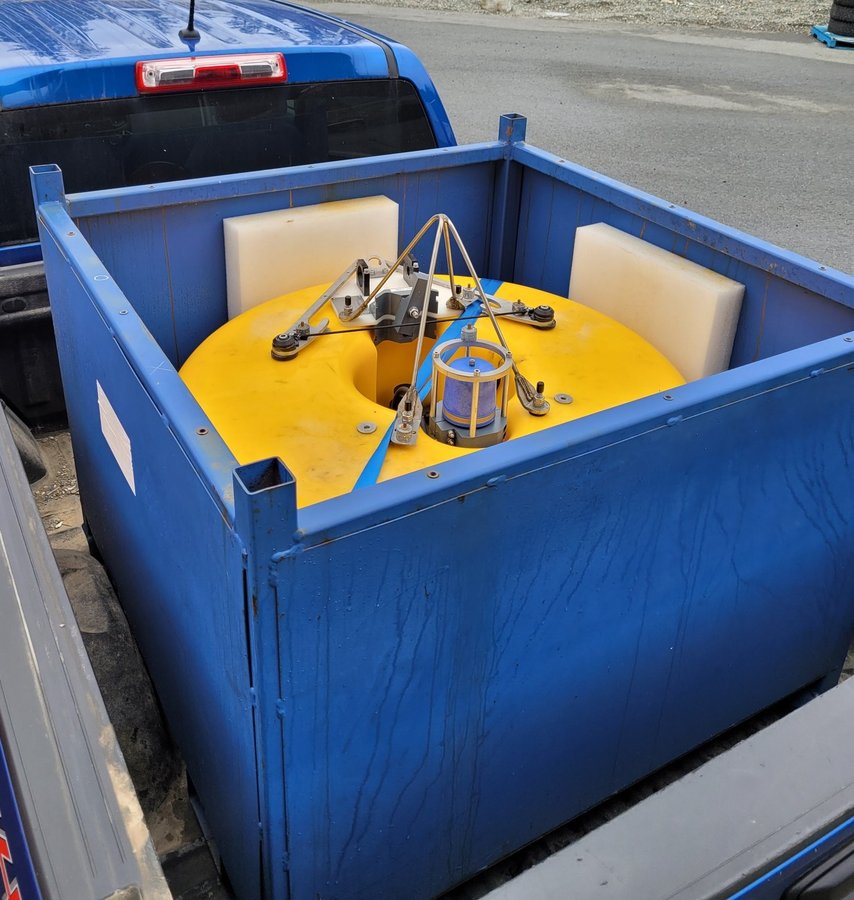
T229 instrument recovered from Queen Charlotte Strait. Photo provided by Andrew Schaeffer.
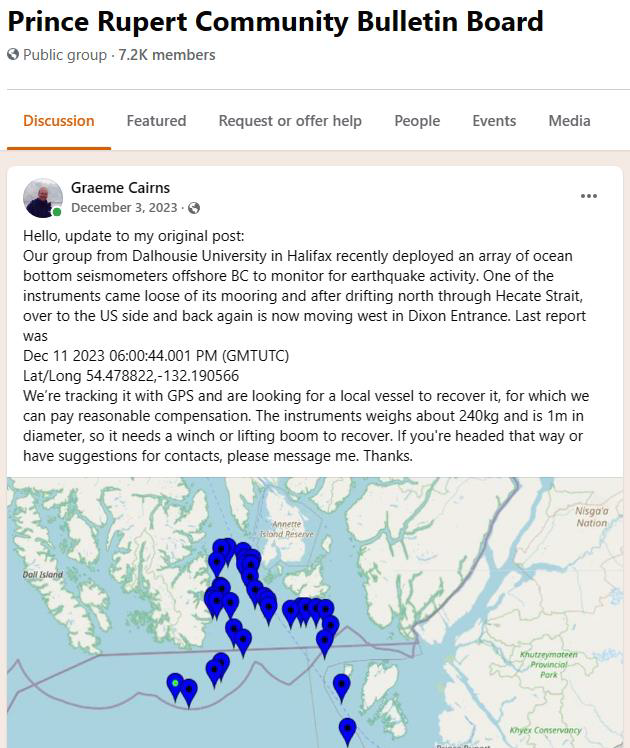
Facebook post on Prince Rupert community board asking for help from local boats.
The T227 beacon began transmitting positions again on December 3, about halfway through Hecate Strait and being pushed north quickly by an active storm system. Andrew and Graeme quickly reached out to local communities and fishing and boat organizations in the Strait, Haida Gwaii and Prince Rupert for help, resulting in a CBC radio interview (starts at 1:42:10). No available Canadian Coast Guard ships were in the area at the time. When the instrument crossed into U.S. waters on December 6, we also contacted the U.S. Coast Guard. Everyone we talked to was eager to help... as soon as the weather calmed. Unfortunately, we lost contact with the instrument before sea conditions were safe for a recovery attempt. Our last position was received on December 12 near the rocky coastline of Long Island, Alaska. We suspect the instrument was pounded on the rocks in stormy conditions, dislodging or damaging the GPS beacon. The syntactic foam buoyancy unit is incredibly durable, so the instrument may still be drifting around the North Pacific waiting to wash ashore someday. It has a label with NFSI's address and contact information on it, so we hold on to a slim hope of a surprise phone call telling us it has been found.
We had to coordinate recovery of the drifters while traveling and performing our next deployment halfway around the world...
November - ELVES OBS Deployment
In late November, we traveled to New Zealand for a deployment of 20 BOBS over the Hikurangi locked zone as part of the ELVES (Earthquakes and Locking Investigation of Subduction) project, a collaboration between Canadian and New Zealand researchers.
The BOBS for this project, a new production batch, had been shipped directly from the UK to our collaborators at GNS Science in New Zealand ahead of time, as well as a new Sonardyne directional dunker. With only 3.5 weeks between the end of the PACSAFE cruise and start of the ELVES cruise, our accessory equipment had to be air-freighted directly from Sidney, BC to Wellington, NZ. As this was our first international project, we were unaware that the USBL we were shipping to communicate with BOBS on the seafloor falls under dual-use regulations for export, requiring a special license. As a result, our entire shipment was detained by Global Affairs Canada, and eventually had to be cancelled. Fortunately, we were able to patch together a minimum package of equipment from our spares in Halifax which could be hand-carried by staff traveling to Wellington and, combined with what we could borrow or buy in New Zealand, allow us to proceed with the deployment.
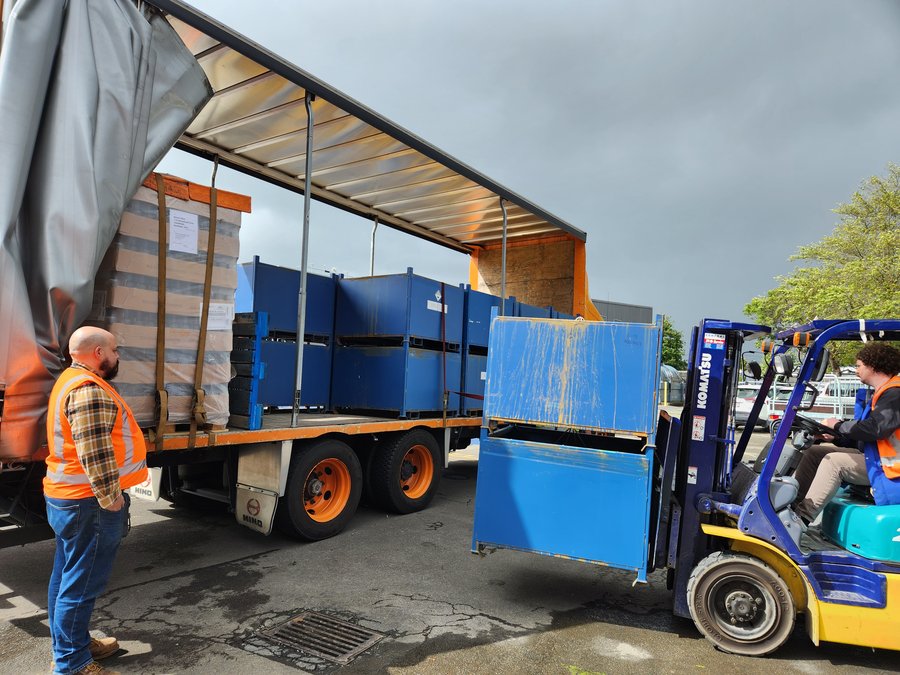
Loading Aquarius BOBS onto a truck at GNS for transport to the ship. Photo provided by Katie Bosman.
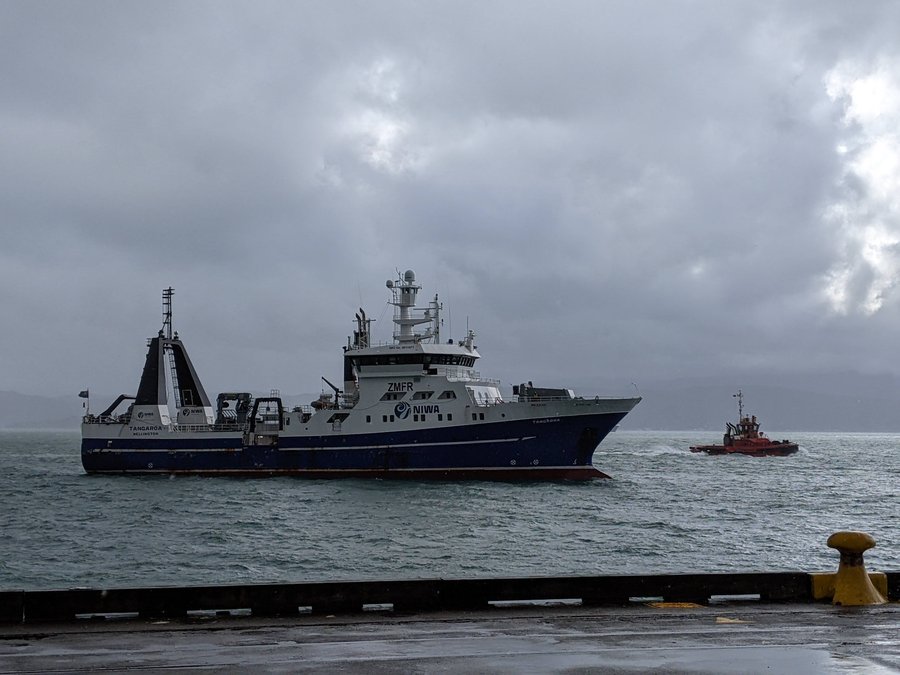
R/V Tangaroa approaching the dock in Wellington, NZ. Photo provided by Graeme Cairns.
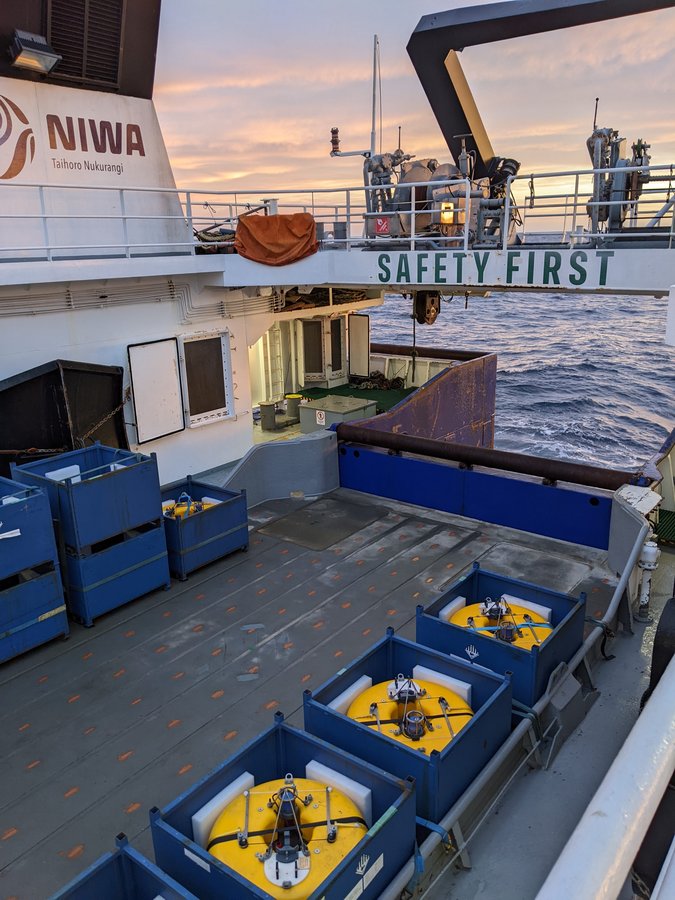
Aquarius BOBS stowed on aft deck of Tangaroa for transit. Photo provided by Graeme Cairns.
The factory-new BOBS in New Zealand required our standard intake inspection and test recording, as well as battery charging in preparation for their first sea deployment. One member of our staff therefore travelled to Wellington over a week in advance of the cruise, with other personnel arriving a few days before boarding. Initial inspection of the instruments found some key parts missing, which although small are essential for deployment. Quick action on the part of everyone involved, including a commissioned hand-carry from the UK to NZ, managed to get the necessary parts to Wellington just in time for the cruise.
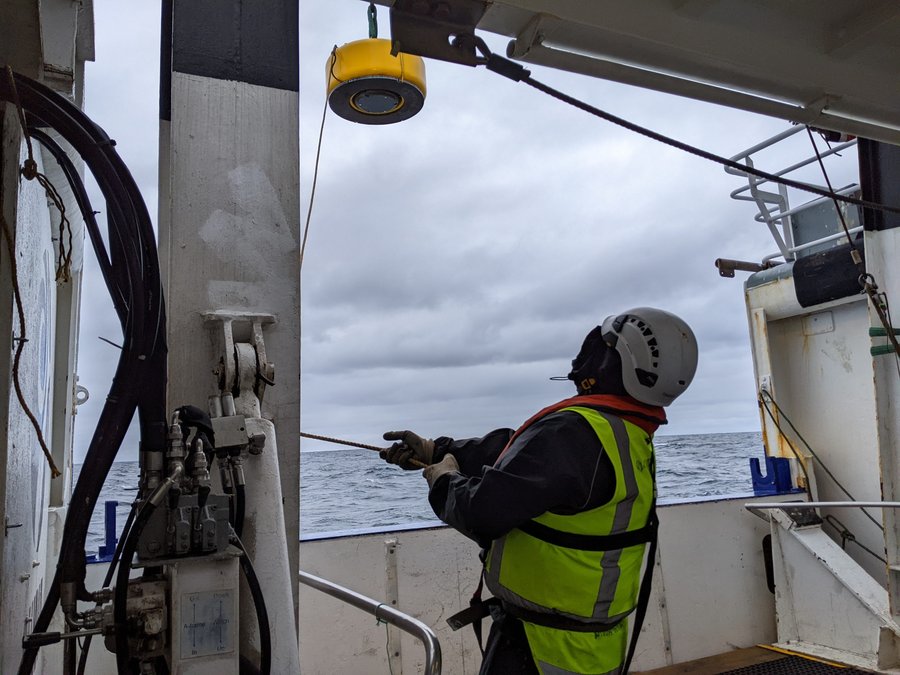
Moving an Aquarius from the aft deck to the starboard side cutaway to prepare for deployment. Photo provided by Graeme Cairns.

Deck crew of R/V Tangaroa deploying an Aquarius. Photo provided by Katie Bosman.

Programming OBS for deployment and filling out log sheets. Photo provided by Taylor Tracey Kyryliuk.
Poor weather conditions in Cook Strait on our first day leaving port and on and off throughout the cruise caused many of the science party to be seasick. Fortunately the scopolamine patches we got from the experienced Kiwi sailors helped and we managed to work effectively.
Building on our experience from the previous 2 cruises this fall, we were able to be very efficient with our deployment process. Supported by the seasoned deck crew aboard RV Tangaroa and with tractable weather conditions, operations proceeded almost like clockwork. The directional dunker proved very effective for acoustic communication, with strong signals received from all stations, deployed at up to 3km water depth. We were able to survey all seafloor locations, and even had a bit of extra time to refine surveys for a few sites and reduce positioning uncertainty to within a few metres.
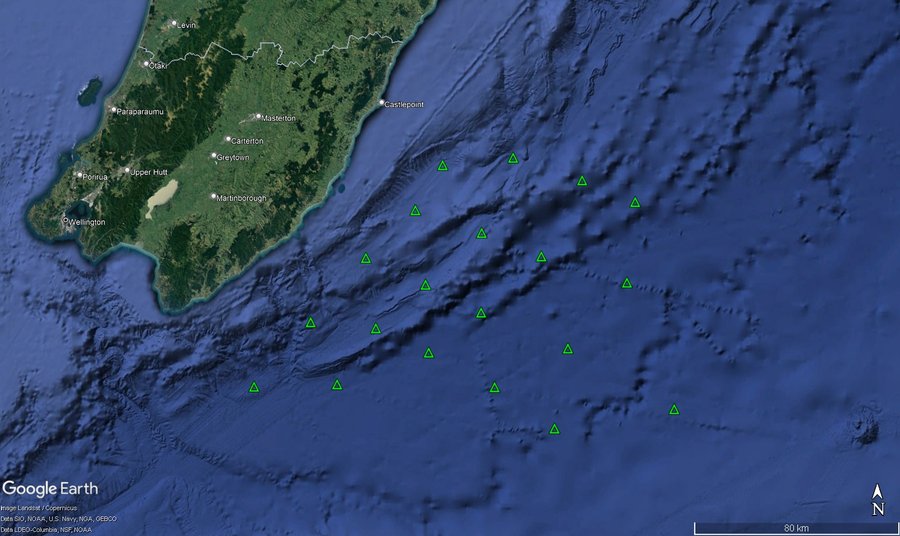
Locations of BOBS (green triangles) deployed for the ELVES I project.
While severe challenges were encountered leading up to the ELVES operation, everything came together in the end. Deployment of all 20 instruments went very smoothly, and even after revisiting several sites to improve positioning accuracy we managed to get back to port earlier than planned. Experienced staff at GNS Science were instrumental in the success of this operation. In addition to being scientific partners in the ELVES project, they were incredibly welcoming and helpful, coordinating local logistics, receiving shipments, sourcing local replacements for some of our waylaid tools, and just generally helping us to find our way in a new location. We were happy to finally meet all of them in person after many months of emails and calls, and we look forward to working with them again for the recovery operation.
With no other field work scheduled for several months, we were able to relax a bit after the cruise and enjoy the beautiful scenery of the Wellington area before heading home for the holidays.
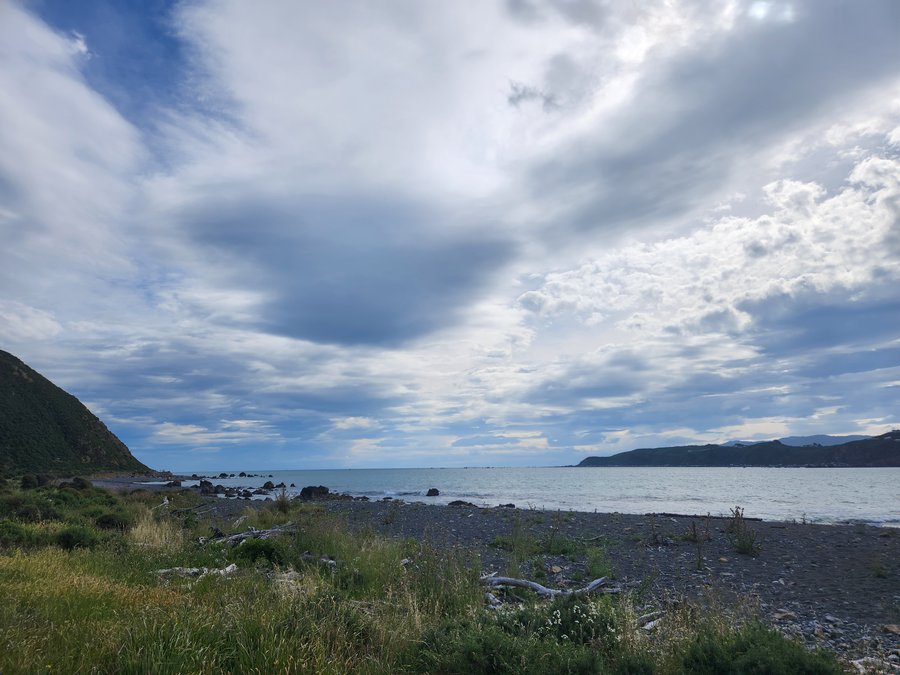
View of Wellington harbour mouth from the Pencarrow Coast Road. Photo provided by Katie Bosman.
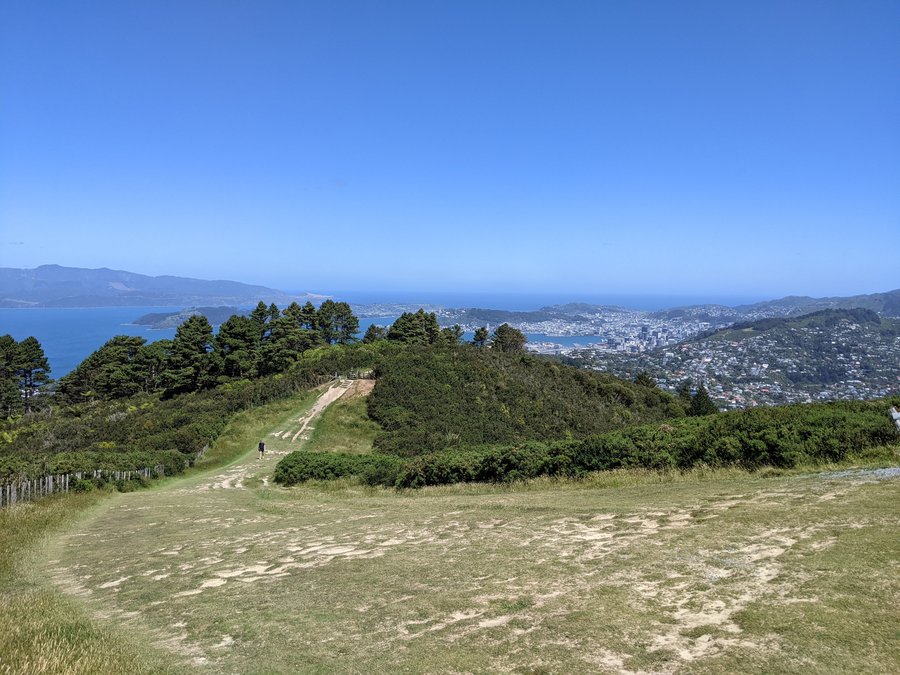
Old Coach Road overlooking Wellington city centre. Photo provided by Graeme Cairns.
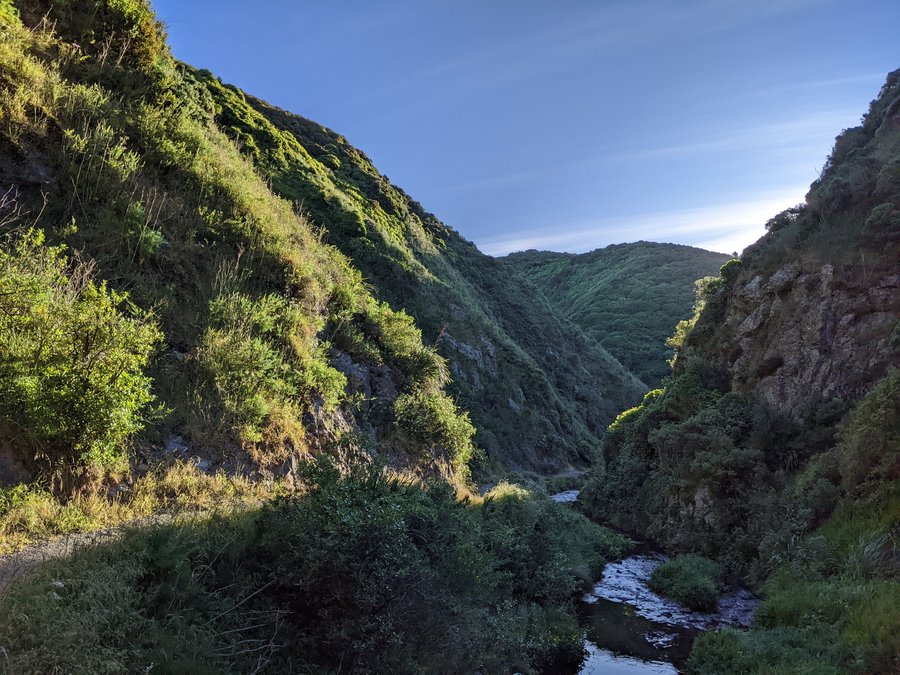
Hiking trail near Wellington. Photo provided by Graeme Cairns.